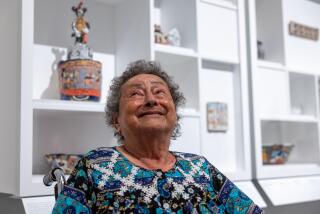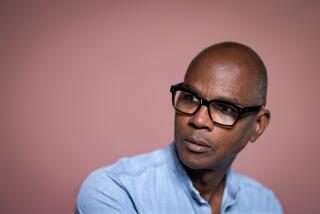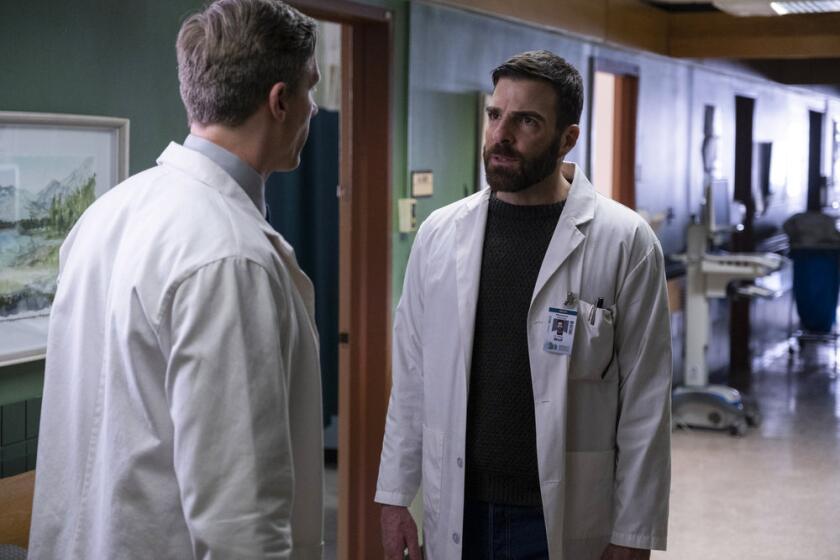Subliminal Projects Gallery’s ‘Eve’ is all about female creation
Even in the Age of Gaga it’s still necessary to remind the world that female artists face barriers. Yes, women are free to wear a meat dress or express themselves in any artistic way imaginable, which is an important, tectonic shift from the rigidity of decades past — but they are still struggling to pierce the armor plating of art’s most sacred institutions.
According to feminist artist and educator Judy Chicago, only 3% to 5% of artwork on display in the permanent collections of most major museums is by a female artist. In the 1970s, only 1.7% of solo art publications focused on women artists; today that percentage has managed to climb to only 2.5%. While there has been change, there’s still a lot of work to be done.
This is why Katherine B. Cone, director of Subliminal Projects Gallery, put together its newest exhibition, “Eve.” From July 23 through Aug. 20, the gallery, created by renowned street artist Shepard Fairey in 1995, will show a diverse collection of works by nine revolutionary female artists, including pioneers of the feminist art movement such as Chicago and Mary Beth Edelson, and others expanding the legacy today, such as Alex Prager and Swoon.
“I wanted to make aware to the young, art-enthusiast public today where the feminist started,” explains Cone. “Unfortunately, still today, it’s a struggle being a female artist in a male-dominated art world. The women in this show have put their guards down to show the world how strong they are.”
This strength is apparent not just in the emotional content of each individual piece, but also in the overall diversity of the exhibition. Cone made a point to represent many different aesthetics and mediums, making it clear to viewers that these are largely unrestricted “technically amazing pieces by technically strong women.” The curator wants these works of art to shake, inspire and move viewers on an emotional level.
“Art is supposed to make you stop, draw you in closer, and smack you in the head,” Cone says. “And that’s what these women have done — they’ve made you stop and think and that’s revolutionary.”
Featured artist Chicago started working in art in the mid-1960s, a time in which the culture didn’t entirely embrace female artists. In the 1970s, Chicago decided to create art that did not deny nor hide her gender: “Eve” proudly displays works from Chicago’s Birth Project collection that celebrate female fecundity and sexuality as the source of all human life.
Chicago, who founded the first feminist art study program in the country, has strived to ensure that women in history are not forgotten and that doors are wide open to young artists.
“I’ve tried to open the way for myself and for other women artists to be able to freely express themselves. In so doing, I’ve tried to open a big path for younger female artists,” says Chicago. “I’ve taken a lot of beatings along the way, but if my art has shown anything, it’s that you don’t die from bad reviews.”
Also on display are the photographs by self-taught photographer Alex Prager, who has merged the worlds of fashion photography and movie stills — think noir thrillers in a bright tangerine-color skirt suit.
Though Prager does not consider herself to be a feminist artist, she says she does intend to “communicate a woman’s point of view in the pictures. This is my world. I have a lot to say about women and about what a woman goes through in these certain moments.” Moments that capture women at their most vulnerable — some unnerving and others of utter despair. Moments that spark the imagination of the viewer, giving us a brief glimpse into that woman’s story.
Kim McCarty’s watercolors use a bruise-inspired palette of acid-yellows, oranges, browns, and greens to depict delicate, vulnerable and uncertain girls and young women. The Hannah Wilke Collection and Archive, Los Angeles generously provided the work of pioneering feminist conceptual artist, Hannah Wilke, whose sculptures, drawings and assemblages are considered to be the first to use vaginal imagery. Edelson, another pioneer of the feminist art movement, explores women’s role in society through her collage posters.
The paintings of one of the U.K.’s most controversial artists, Stella Vine, open up a different part of the female experience with subjects drawn from her personal life or from royalty and celebrities.
“Eve” is a word and a show that implies creation — encompassing the first feminist artists who conjured new modes of expression and contemporary artists who are maximizing those possibilities, plus a woman’s intrinsic ability to create new life. Such work is a revolution in progress.
More to Read
The biggest entertainment stories
Get our big stories about Hollywood, film, television, music, arts, culture and more right in your inbox as soon as they publish.
You may occasionally receive promotional content from the Los Angeles Times.










